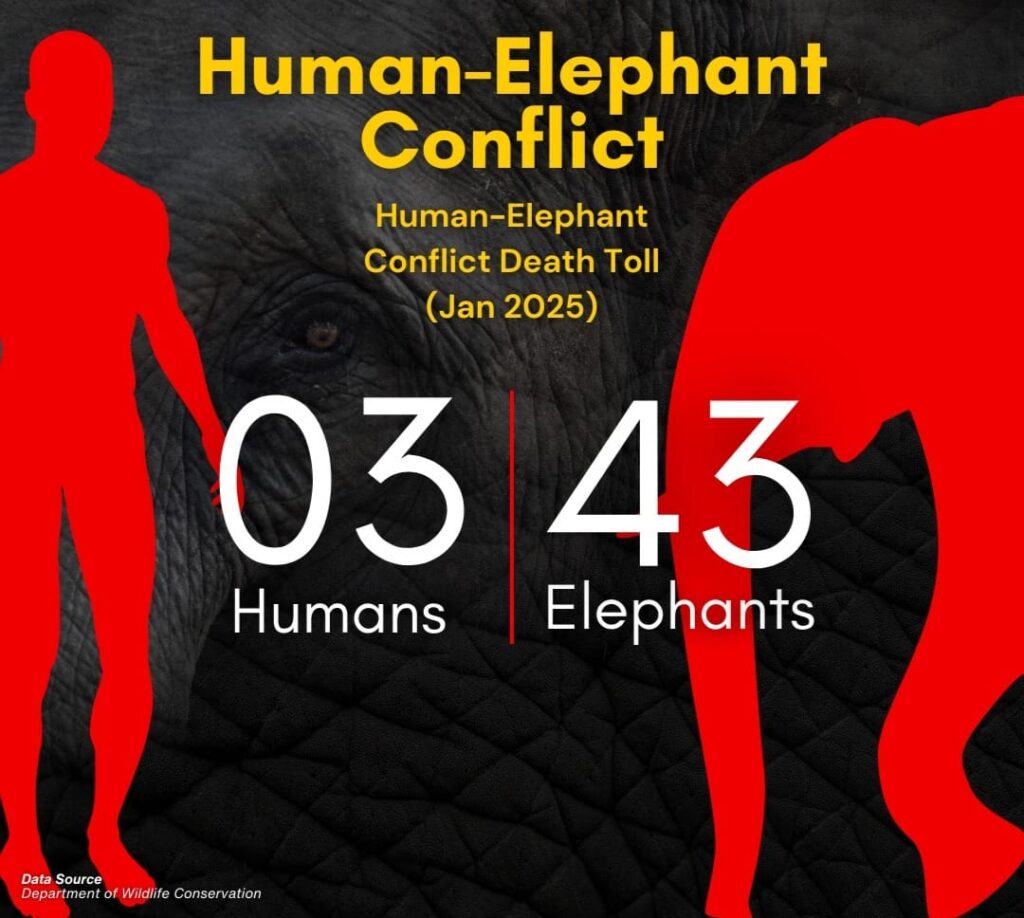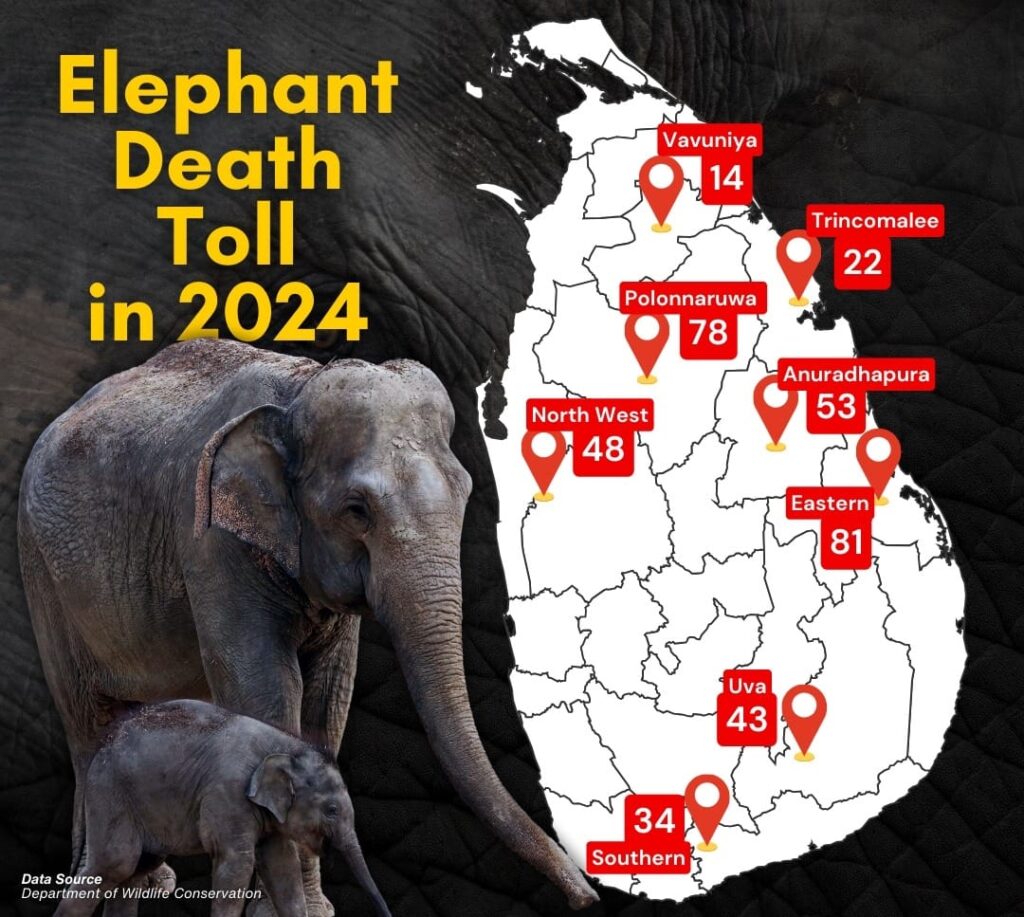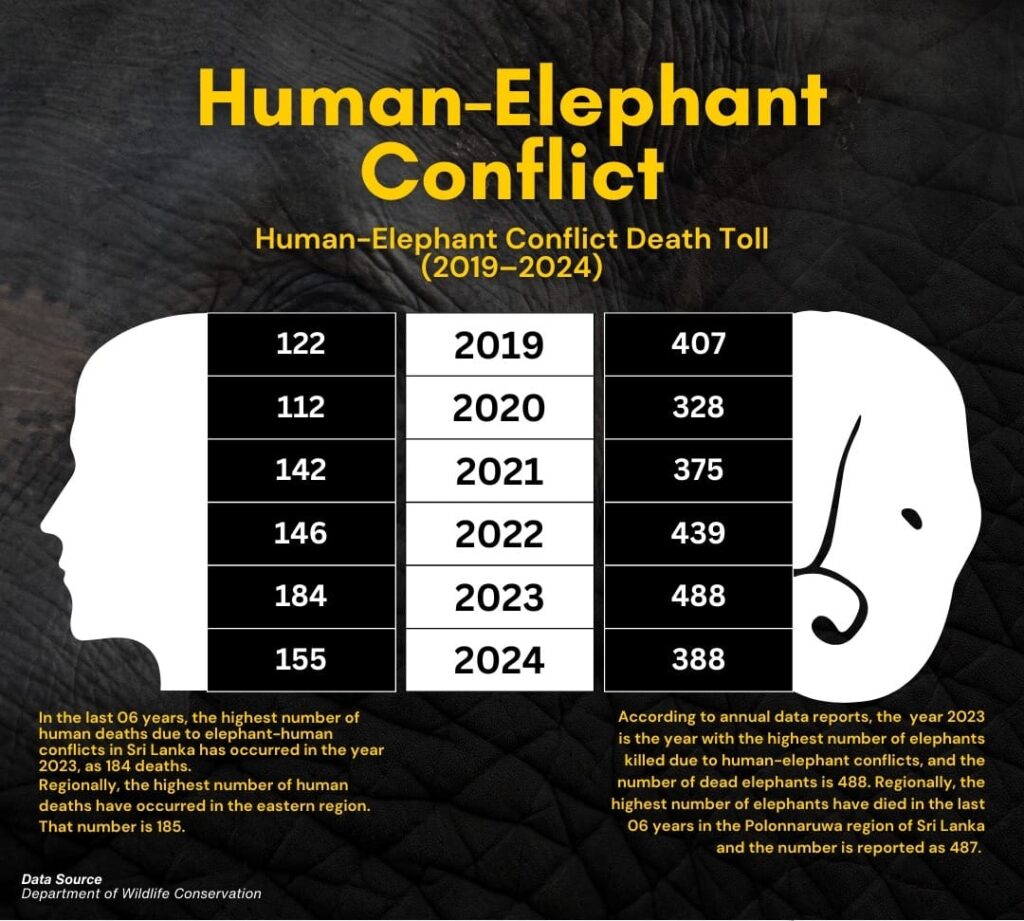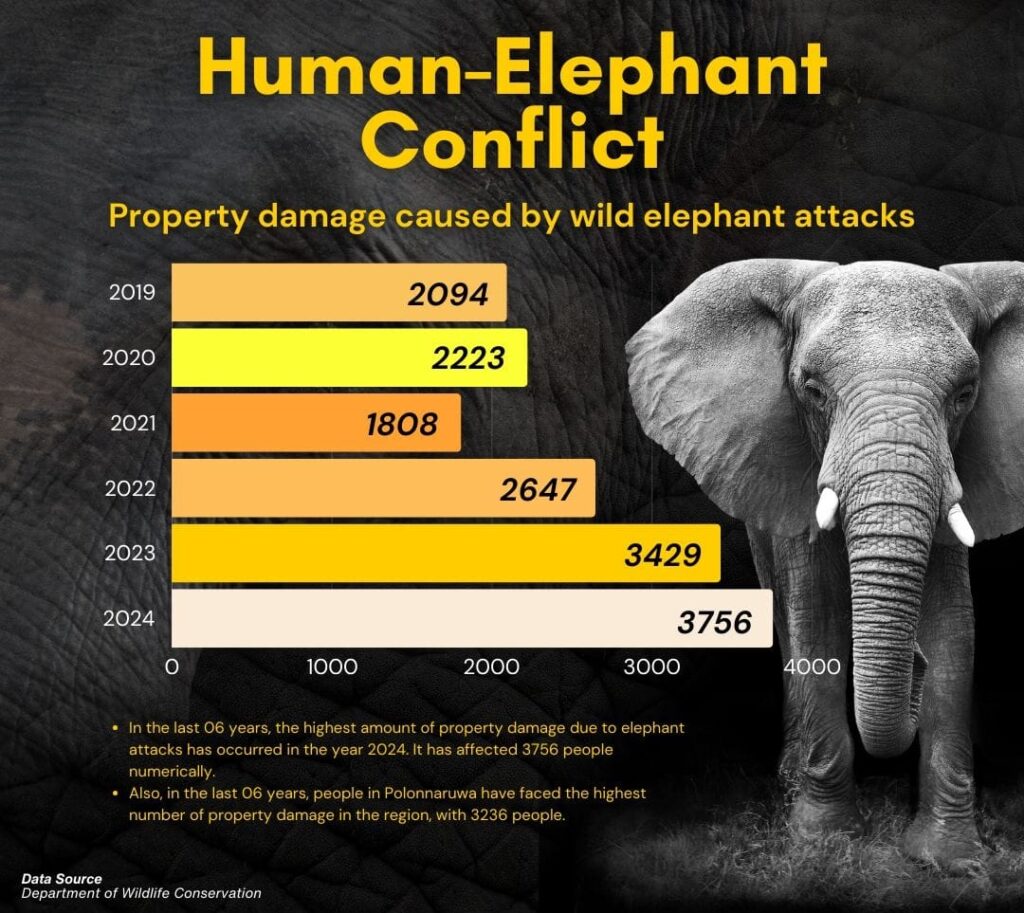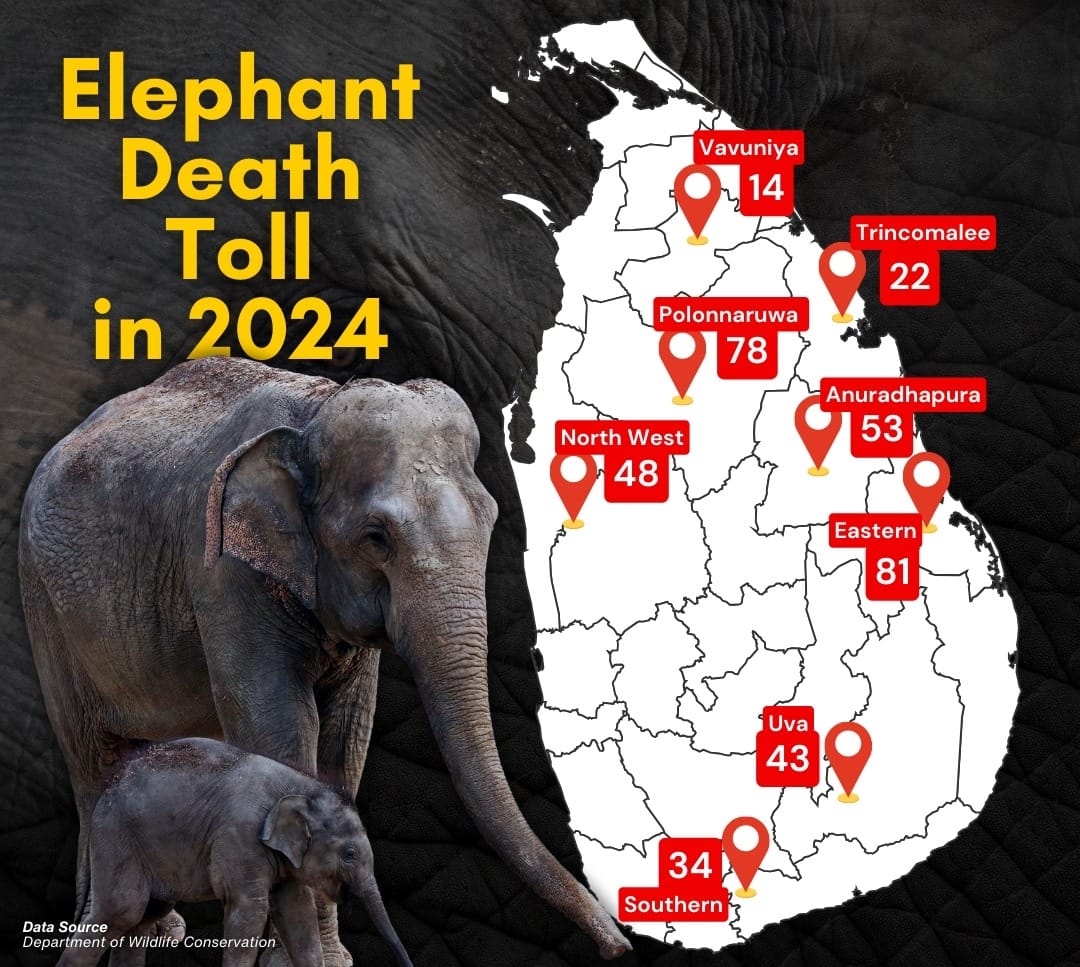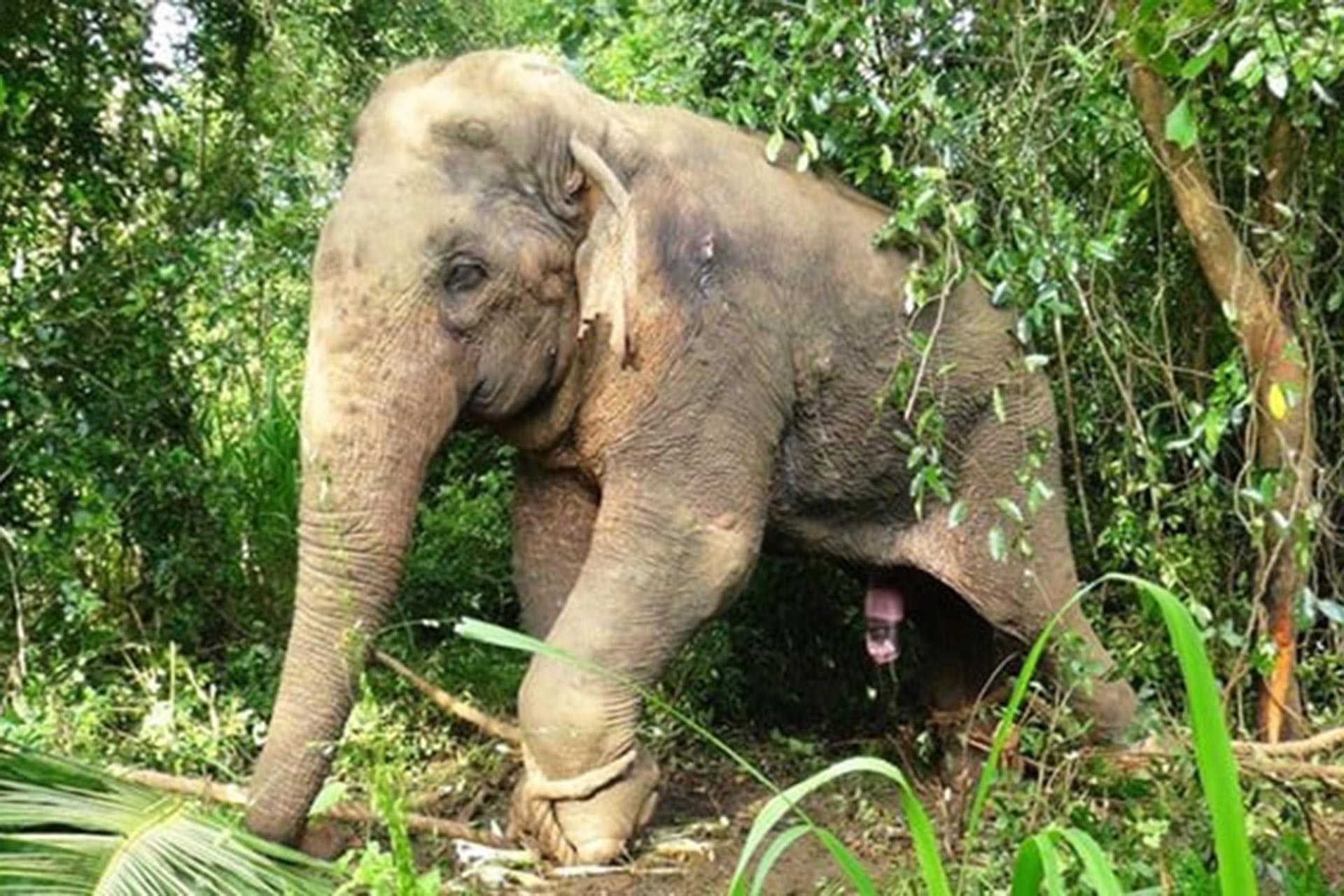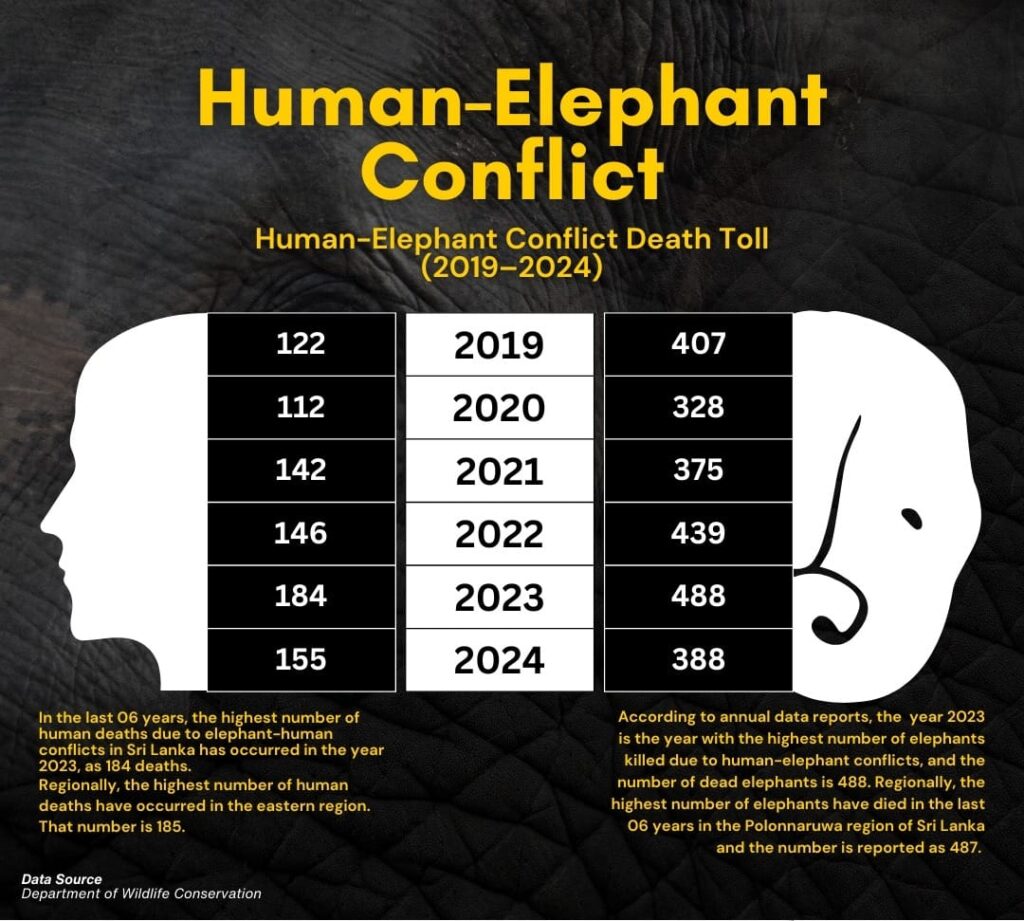
By Parameswaran Yagavan
Amidst dense forests and vast grasslands, a major battle is unfolding. This is a struggle between survival and coexistence. Due to human expansion and land encroachment, combined with livelihood pressures, elephants are being pushed to the brink as their habitats and ancient migration paths are being taken over. Once revered by humans, these majestic creatures now find themselves at odds with farmers and communities, who are fighting to protect their livelihoods and homes. But is this truly a conflict, or is it a call for balance in a world where both nature and humanity must find a way to thrive together?
In recent days, there have been numerous reports of elephant deaths. The human-elephant conflict in Sri Lanka’s forest regions has been intensifying, leading to significant losses on both sides. Specifically, in the last six years, from 2019 to 2024, 2,425 wild elephants and 961 people have lost their lives due to human-elephant clashes, according to the latest reports from the Department of Wildlife Conservation. In January of this year alone, 43 elephants and three humans were reported dead.
In light of the continuous elephant-human clashes and the resulting fatalities, FactSeeker, a publication of the Sri Lankan Press Establishment, filed a request under the Right to Information Act with the Department of Wildlife Conservation. After analyzing the received data, FactSeeker has now disclosed the findings.
During this period, the highest number of human casualties has been recorded in the Anuradhapura district. According to the Department of Wildlife Conservation’s data, 185 people have lost their lives in the Anuradhapura district. Similarly, the highest number of elephant deaths in the past six years occurred in 2023, with 488 elephants reported dead. The district with the highest number of elephant fatalities, according to the forest area-based census, is the Polonnaruwa district, where 487 elephants have died.
The elephants killed in this way have largely succumbed to gunshots, electrocution by power lines, and attacks by sharp objects such as snares. Between 2019 and 2024, 409 elephants were killed by gunshots, 356 by snares, and 316 by electrocution. Additionally, significant property damage has occurred in the Polonnaruwa district. In 2024 alone, 3,756 people have faced property damage due to human-elephant conflict, the highest number recorded in the past six years.
Sri Lanka’s policies and strategies for the survival of elephants are not only crucial in terms of wildlife conservation but also depend on the collective efforts across all sectors of society. To create a future where both humans and elephants can thrive without conflict, wildlife guards, officials, and local communities must collaborate. It is essential that these magnificent creatures continue to roam our lands for generations to come.
